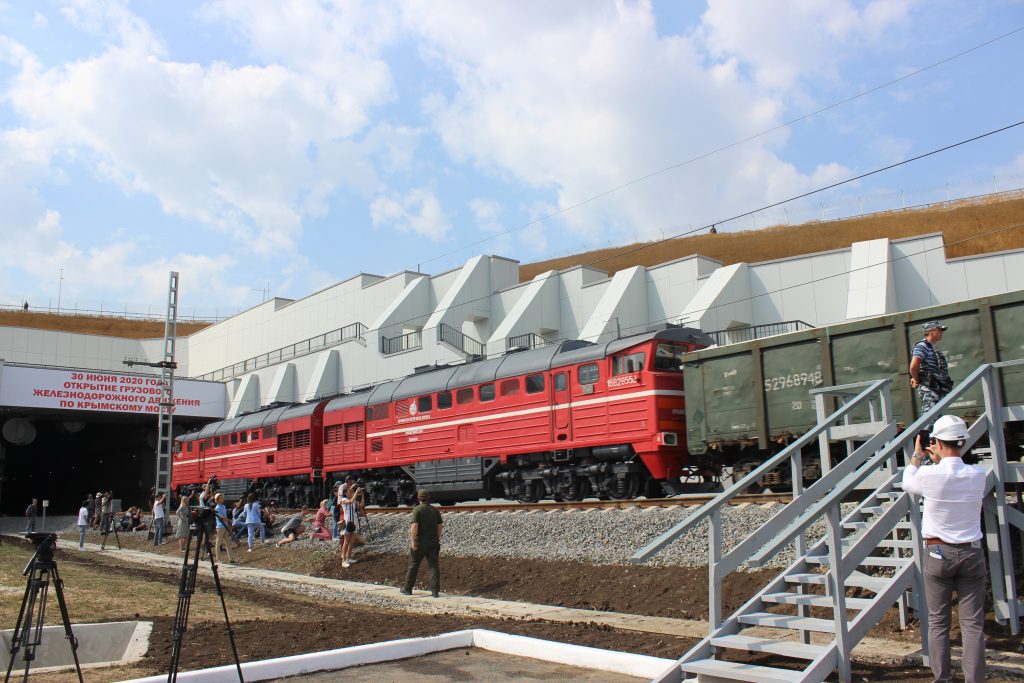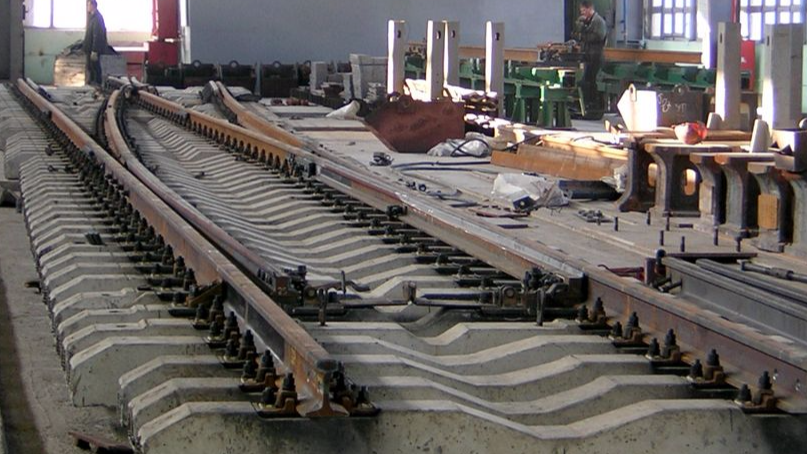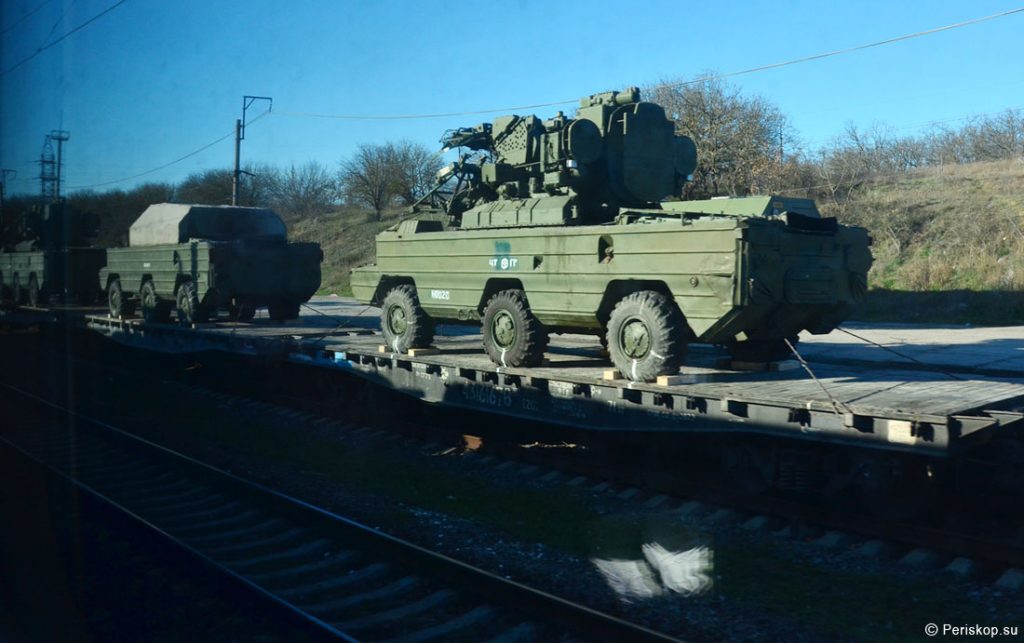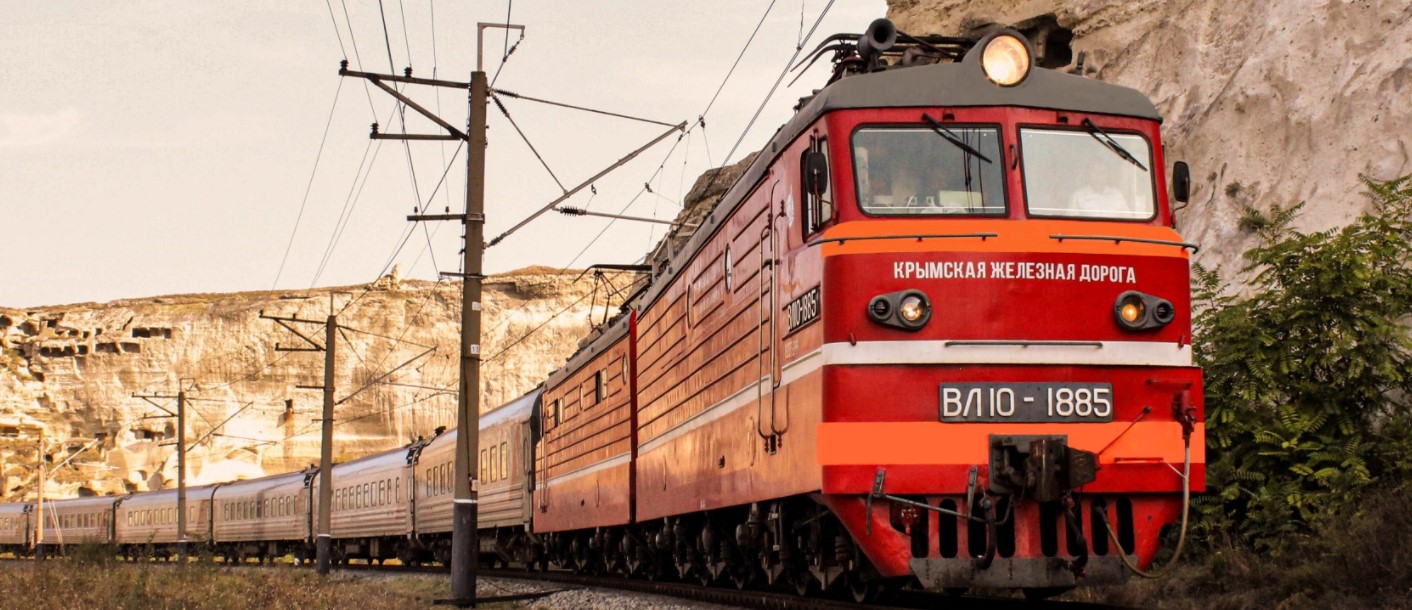Federal State Unitary Enterprise “Krymskaja zheleznaja doroga” \ the Crimea railway was set up by Russian occupants on the basis of the Crimean Directorate of Cisdnieper Railways seized in March 2014. In 2015, occupation “authorities” of Crimea transferred this company into the ownership of the Russian Federation.
The US introduced sanctions and export restrictions against Crimea railway in December 2016. Ukraine applied sanction restrictions in May 2017. It prolonged them for three years in June 2021. The EU introduced sanctions against Crimea railway only in October 2020. However, the company keeps transporting goods from occupied peninsula to the territory of the Russian Federation, and from there – to other countries. The Center for Journalist Investigations used the data from open sources to uncover what goods, in what quantity and where Crimea railway transported in July-September 2021.
The Crimea railway was almost closed when the movement of trains through the Isthmus of Perekop and Chonhar was closed. The situation improved when rail traffic was opened through the Kerch Bridge. However, under occupation conditions the company incurs and will always incur losses. In 2020, losses of the Crimea railway amounted to 2.8 billion rubles. Sanction pressure on Russia and the Crimea railway is needed for the following reasons. Crimea railway uses the Ukrainian railway infrastructure illegally seized by Russia. The company actively fosters the occupation and militarization of Crimea by transporting Russian troops and military equipment. It also transports a number of goods from Crimea to the Russian Federation and other countries and violates Ukrainian legislation and sanction restrictions.
Goods and their destinations
What goods and where did the Crimea railway transport? The largest share of the rolling stock, 2 929 cars, was used by the company for internal Crimean transportation of stones, rubble and limestone. Diesel fuel was carried by 71 cars. One car transported cranes. The Crimea railway also transported 15 cars of soda ash manufactured by the enterprise “Krymsky sodovy zavod” \ Soda Crimea Plant owned by Ukrainian oligarch Dmytro Firtash. The enterprise is registered as JSC “Krymsky sodovy zavod”, in accordance with the Russian legislation. This company is still not included in sanction lists.

Opening of freight traffic on the Kerch bridge. 2020 Photo: crimearw.ru
Data from open sources about goods and quantity of the rolling stock is incomplete. That is why we cannot find out details of internal Crimean transportation of the Ukrainian ilmenite smuggled to closed Crimean ports of Kerch, Feodosia or Sevastopol to the titanium plant of Dmytro Firtash in Krasnoperekopsk.
Crimean chemical products go East
It seems that Crimean plants of Mr. Firtash are the most important partners of the Crimea railway and, consequently, the largest economic collaborators of occupation “authorities”. The soda ash from Mr. Firtash’s plant forms the lion’s share of Crimea railway’s transportation outside Crimea. 1706 freight cars crossed the Kerch Bridge from Crimea to Russia in July-September 2021. Three quarters of them were cars with soda ash, with a total weight of approximately 96 thousand tons (approximate lifting capacity of one car is 70 tons).

Photo: crimearw.ru
The Russian Federation was not the only destination of Mr. Firtash’s soda. 15 cars of soda ash went to the Belorussian railways, 55 cars – to the railways of Kazakhstan and two cars – to the railways of Tajikistan. It is the so-called Crimean export occupants dream about.
Remaining cars travelled all over Russia – from Moscow and Caucasus to the Western Siberia. It is possible that these goods were supplied from the Russian Federation to foreign clients, in violation of the sanction regime.
Russia also likes the Crimean green vitriol. It is produced by Dmytro Firtash’s enterprise – the former “Crimean Titanium Plant” of the Armyansk branch of JSC “Ukrainian Chemical Products” leased to Russian LLC “Titanium Investments”. 75 cars of the Crimean green vitriol (more than five thousand tons) went to Russia.

Ukrainian Chemical Products Branch, Armyansk, Crimea Photo: screenshot YouTube Garnachuk
14 cars of edible salt went to the Russian Federation. The same number of cars with baking soda crossed the Kerch Strait. Seven cars travelled from the Russian Federation to Kazakhstan and two cars – to Tajikistan and Uzbekistan. Salt and soda were produced by Mr. Firtash’s “Soda Crimea Plant”.
Six cars of anthracite (produced by the Crimean Soda Factory) and four cars of ferric chloride produced by JSC “Brom” in Krasnoperekopsk (JSC “Brom” in Russian jurisdiction) also went to Russia. JSC “Brom” is not covered by sanctions.
69 cars with gas condensate were also transported to the Russian Federation. It is extracted by the State Unitary Enterpruse of the Republic of Crimea “Chernomorneftegas” at gas deposits seized from Ukraine.
Railroad switches for Russia
Railroad switches are manufactured by State Unitary Enterprise of the Republic of Crimea “Kerch Metallurgical Plant” created by occupants on the basis of seized LLC “Kerch Railroad Switch Factory”. 15 cars with railroad switches went to Russia and one – to Belarus within the third quarter of 2021. The enterprise is still not sanctioned.

Railroad switches of the Kerch Metallurgical Plant Photo: kmz-k.com
The Crimea railway sent to the Russian Federation 13 cars with details for railway construction, one car with details for rails and four cars with enameled dishes (two of them travelled to Kazakhstan). All these goods were also manufactured by “Kerch Metallurgical Plant”.
Assets of occupants and colonizers
Special attention should be paid to the “goods for personal needs”. The Gorky, Trans–Baikal, Krasnoyarsk, Kuybyshevskaya, Privolzhskaya and Yuzhno–Uralskaya railways received one car of those goods each; the Northern, North Caucasus, Moscow and West Siberian railways – per two cars. Four cars went to the Far Eastern railway and seven cars – to the Oktyabrskaya railway. Why are these goods and their destination important? The reason is that private goods of military personnel and other public officials are usually transported in this manner when they are appointed to the new location. Thus, we can make conclusions about regions where the Russian Federation relocates its military officers who served in occupied Crimea.

Crimea, Mackenzie Mountains station. 2020 Photo: periskop.su
Besides that, the Crimea railway sent to the Russian Federation 36 cars with empty universal containers and nine cars with empty specialized containers.
12 cars with fuel oil, eight cars with sheet steel, four cars with broken glass, three cars of special autos, per two cars with gypsum, dump trucks, transport and construction equipment, per one car with car trailers, semi trailers, auto and bus spare parts were also directed to the Russian Federation.
One car with canned fish went to Kazakhstan and one car with various equipment – to Belarus.
Passenger transportation
Passenger railway transportation between the Russian Federation and occupied Crimea through the Kerch Bridge is conducted by Russian JSC “Transport Company “Grand Service Express” (GSE), the first private railway carrier in Russia. The company launched the Crimean route in 2019.

Interior of the train car «Tavria» TC GSE Photo: grandtrain.ru
GSE transports Russians to Simferopol and Sevastopol from Saint Petersburg and Moscwo (daily), Omsk, Astrakhan, Perm, Smolensk and Kislovodsk (every other day or on certain dates). In accordance with official data, GSE transported 1.1 million passengers during the first year of operations in Crimea, and 1.2 million – from May to September 2021.
The company has a long history. For a long time it transports passengers along the route Saint Petersburg – Moscow. However, the company revenue exceeded one billion rubles only in 2019 – after the transportation with Crimea was launched. In 2020, the revenue amounted to 4.3 billion rubles. And in 2020 the company became unprofitable for the first time in its history. Its losses were 420 million rubles.
In 2020, “Grand Service Express” was sanctioned by the USA and EU. Sanctions were also imposed on Oleksandr Ganov, its general director, former manager of the Russian Sberbank, ex-minister of investments and innovations of the government of Moscow oblast of the Russian Federation.

Alexander Ganov, General Director of TC GSE Photo: grandtrain.ru
Unfortunately, Ukraine did not yet impose sanctions on “Grand Service Express”. They were introduced against Oleksandr Ganov. However, only his citizenship and date of birth are indicated in the addendum to the NSDCU decision from 23.03.21. Authors of the sanction list did not indicate his position and were not able to find his individual taxpayer code. This data is easily available in open sources: Ganov Oleksandr Mykolayovych, taxpayer code 366303429029, general director of JSC “Transport Company “Grand Service Express”.
Thus, the situation with railway transportation in occupied Crimea is another example of the deficient sanction legislation of Ukraine. Ukrainian authorities are not capable of fully using even existing sanction instruments. The reform of the Ukrainian legislation about sanctions is an urgent need.








